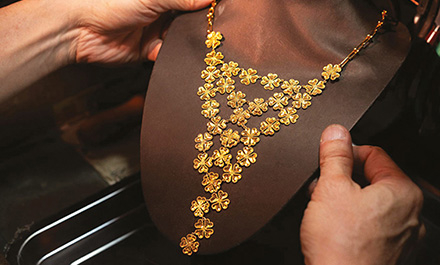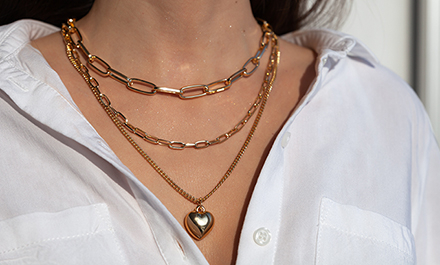Gold jewellery consumption in key markets across the globe was lacklustre in the second quarter of 2024 mainly due to high prices and weak consumer sentiment.
According to the World Gold Council’s (WGC) latest Gold Demand Trends report, global demand was down 19 per cent year on year to 391 tonnes, with China recording the largest dip of 35 per cent to 132.1t and India seeing a 17 per cent decline to 128.6t.
First-half gold jewellery consumption fell 10 per cent year on year to 870t after what WGC described as a “relatively resilient” first-quarter performance.
“This was the weakest second quarter since 2020, when jewellery demand felt the worst impact of the pandemic,” noted WGC. “In value, Q2 jewellery demand measured US$29 billion. That was 4 per cent lower year on year as the sharp rise in the gold price did not quite compensate for the decline in volumes.”
Gold prices during the quarter in review reached US$2,391.1 per ounce on May 20 from US$2,284.2/oz at the start of Q2 on April 1, data from WGC showed. Prices have since peaked at US$2,442.4/oz on July 15 and dropped back to US$2,391.1 as of July 29.
First-half gold jewellery demand, meanwhile, was up 2 per cent in value terms from US$61 billion during the same period last year – the highest H1 result since 2013.
Major gold markets
Weighed down by rising gold prices and slow economic growth, China’s gold jewellery demand was the weakest for a Q2 since 2009, according to WGC.
China’s gross domestic product (GDP) and disposable income growth decelerated in the quarter, adversely affecting consumer spending alongside jewellery demand as reflected in sluggish Labour Day holiday sales in May – traditionally a peak buying occasion.
WGC said the trend for lightweight products with affordable unit prices continues to gain traction in China. The council said, “Sales of 24K hard gold products outperformed other categories in the first half and, in general, smaller pieces with lower costs were welcomed by consumers.”
Prospects, however, remain dim in the second half of 2024. WGC explained that while seasonal strength in Q4 should provide support, consumer sentiment is likely to remain fragile until clear signs of economic improvement emerge. A further uptick in gold prices could continue to impact demand as well.
Meanwhile, India also suffered from record gold prices exacerbated by election jitters in April and June and a heatwave in May. WGC said demand in Q2 was the lowest since 2021. India’s domestic economy remains healthy, though, with GDP expected to grow 7 per cent in 2024.
“Encouragingly, there have been few signs of distress selling of gold jewellery by Indian consumers. Recycling activity has been dominated by gold-for-gold exchange, rather than outright sales,” WGC said. “More notably, there has been growth in gold loans using jewellery as collateral. Such activity was reportedly up 30 per cent year on year by the end of May.”
India’s recent decision to cut import duties on gold and other metals could also bolster consumption. Total import duty on gold was slashed from 15 per cent to 6 per cent, and from 14.35 per cent to 5.35 per cent for gold dorè.
The change, which took effect on July 24, is likely to prompt a revival in gold jewellery demand in Q3 as the lower price of imported gold feeds through to consumers at the retail level before seasonal festive buying begins, the council said.









